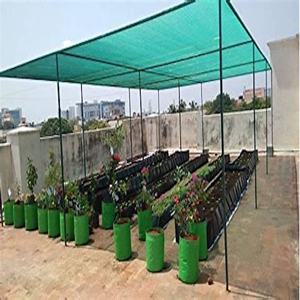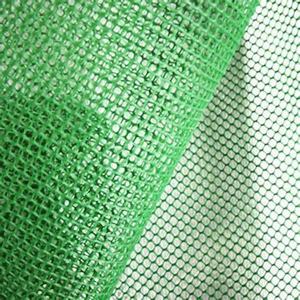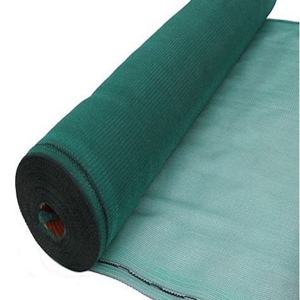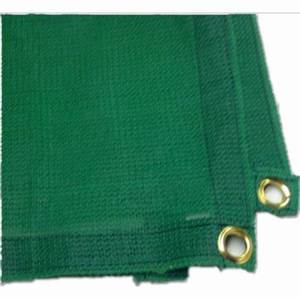(59 products available)























































































































































































































Farm shade screens are used to block sunlight and create a cooler environment. They are typically made from woven HDPE (high-density polyethylene) material. There are different types of Argo shade nets based on the level of shading they provide and their specific applications. Some of these are as follows:
Shade percentage:
These types of shade nets are available in different percentages. Typically, they range from 40 to 95 percent. The 40% shade net is suitable for plants that require full sunlight. The 95% shade net is suitable for plants that require minimal sunlight. These nets are usually gray, black, or green in color.
Material type:
There are two main types of shade nets based on material. The HDPE shade net is the most popular. It is lightweight and durable. The polyester shade net, on the other hand, is more affordable but less durable.
Knitted vs. woven:
The knitted shade net is made by looping the threads together. This makes it more flexible and tear-resistant. The woven shade net is made by interlacing the threads. It provides a more rigid and durable structure.
Flame resistance:
There are fire-resistant shade nets and non-fire-resistant shade nets. The flame-resistant ones have a special coating that helps prevent the spread of fire. They are important for areas where fire safety is a major concern.
UV protection:
These types of shade nets are designed to protect plants and people from harmful UV rays. They are made by adding special additives during the manufacturing process. These additives help block UV rays while still allowing air and water to pass through.
Size and shape:
Farm shade screens are available in different sizes and shapes. They can be cut to fit specific areas, such as garden beds, patios, and balconies.
Breathability
Shade netting is made from breathable fabrics. This allows air to circulate freely through the net. Shade-providing plants and structures need this airflow. It keeps plants cool. It prevents overheating in closed spaces. It also stops mold from growing. Shade nets improve plant health this way.
UV Protection
Shade nets protect from harsh UV rays. They block 70-95% of UV radiation depending on the net. This stops plant leaves from burning in the sun. It also protects fish and livestock in shaded areas. Less sunburn means better growth and health for all organisms.
Durability and Longevity
Shade nets are tough. They withstand strong winds, heavy rain, and other weather. Their materials resist tearing, fading, and fraying. This provides reliable shade for many years. Farmers and gardeners do not need to often replace their nets. This saves them money over time.
Flexibility and Versatility
Shade nets can work in many settings. They help urban gardens, commercial farms, and nurseries. Farmers can use them to create shaded spaces for plants, fish ponds, and livestock. Shade nets fit different needs. Their modular design allows for easy expansion or reconfiguration.
Water Resistance
Farmers and gardeners want shade nets that resist water. These nets keep crops and livestock dry during rain. Water-resistant nets also prevent mold growth in damp areas. This protects plants and animals from disease.
Fire Resistance
Some shade nets have a fire-retardant coating. This stops the net from catching fire easily. It also prevents flames from spreading along the netting. Fire-resistant nets protect farms and gardens in areas with wildfire risk. Farmers can feel secure using these nets in flammable regions.
Easy Installation and Maintenance
Farmers want shade nets that are simple to put up. Nets with grommets or ties make installation quick. Users do not need special tools or skills to hang the netting. Shade nets also need little care. Their tough materials can last many years with proper hanging. This saves farmers time and money.
Shade nets are used in different industries and can be used in multiple applications.
Agricultural industry
In the agricultural industry, these shade nets are used to protect crops from harsh weather conditions. For example, they protect plants from strong winds, heavy rainfall, and extreme temperatures. They also protect plants from pests and birds and create a controlled environment that can promote healthy growth.
Commercial horticulture
Commercial horticulture uses shade nets to create an optimal growing environment for plants such as flowers and ornamental plants. These nets control sunlight, reduce stress on plants, and increase plant health and yield.
Nurseries and garden centers
Nurseries and garden centers use shade nets to provide plants with the right amount of sunlight. These nets protect young plants from direct sunlight and help them grow. They also create an environment for the plants to thrive.
Turf and landscape management
Turf and landscape management use shade nets to protect and establish turf. These nets reduce weeds and provide a protective cover for the grass to grow. They are also used in landscape to create shaded areas for plants that need shade.
Research and education
In agricultural research and educational institutions, shade nets are used for controlled experiments and demonstrations. They study the effects of shade on plant growth, develop new agricultural practices, and train farmers.
Livestock protection
Livestock farmers use shade nets to create shaded areas for animals. The nets protect the animals from the harmful effects of direct sunlight, reduce heat stress, and improve animal welfare.
Construction industry
In the construction industry, shade nets are used as safety nets to prevent debris from falling and to provide protection. They are also used to create temporary enclosures and to control dust.
Event management
Event managers use shade nets to create shaded areas for events such as weddings, outdoor parties, and concerts. The nets protect attendees from the sun and light rain and create a comfortable environment.
Wholesale buyers need to understand the needs of their clients to choose the right shade nets. They must also evaluate the following factors:
By considering these factors and understanding their customers' needs, wholesale buyers can select shade nets. These nets will be popular and meet the demands of the agricultural and horticultural markets.
Q1: What are the benefits of using shade nets?
A1: Shade nets offer protection against harsh sunlight, wind, and pests while promoting healthy plant growth and reducing irrigation costs.
Q2: How can one utilize a shade net?
A2: Shade nets can be used in horticulture, nurseries, vineyards, and patios, among other applications, to create shaded areas and protect plants or people.
Q3: What colors do shade nets come in?
A3: Shade nets are available in various colors, including green, black, and beige, among others.
Q4: What sizes do shade nets come in?
A4: Shade nets are available in different sizes to accommodate various needs and applications.
Q5: Can one customize a shade net?
A5: Yes, shade nets can be customized in terms of size, color, and other specifications to meet specific requirements.